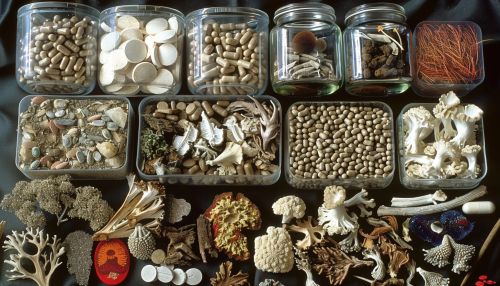Hallucinogens
Introduction
Hallucinogens are a diverse group of drugs that alter a person's awareness of their surroundings as well as their own thoughts and feelings. They are commonly divided into two categories: classic hallucinogens (such as LSD) and dissociative drugs (such as PCP). Scientists are still unsure exactly how these drugs work, but current research suggests that they disrupt communication between nerve cells and the neurotransmitter serotonin, which is distributed throughout the brain and spinal cord and is involved in the control of mood, sensory perception, sleep, hunger, body temperature, and muscle control.


History
The use of hallucinogens dates back to prehistoric times. Ancient cultures around the world used these substances, often in religious rituals, for their ability to induce states of detachment from reality, transcendence, and mystical experiences. Some of the earliest evidence of hallucinogen use comes from archaeological sites in Africa and Europe where paintings and engravings suggest the use of hallucinogenic plants. In the Americas, indigenous cultures have a long history of using hallucinogenic substances in religious and healing rituals.
Types of Hallucinogens
Hallucinogens can be categorized into two main types: classic hallucinogens and dissociative drugs.
Classic Hallucinogens
Classic hallucinogens, also known as psychedelics, include substances like LSD, psilocybin (found in certain mushrooms), mescaline (found in the peyote cactus), and DMT (found in certain Amazonian plants). These drugs can cause users to perceive things that are not there, have distorted visual perception, and experience altered thoughts and feelings.
Dissociative Drugs
Dissociative drugs, on the other hand, cause users to feel detached from their bodies and environment. This category includes substances like PCP, ketamine, and dextromethorphan (a common ingredient in over-the-counter cough suppressants). These drugs can cause hallucinations, but they also produce other effects, including sedation, numbness, and memory loss.
Effects of Hallucinogens
The effects of hallucinogens can vary widely depending on the specific drug and dosage, the user's personality and expectations, and the environment in which the drug is used. However, some common effects include hallucinations, changes in perception of time and space, intensified feelings and sensory experiences, and spiritual experiences. Some users also experience negative effects, such as fear, paranoia, and panic.
Potential Therapeutic Uses
Despite their potential for abuse and addiction, some hallucinogens have been studied for possible therapeutic applications. For example, research has shown that psilocybin, the active ingredient in "magic mushrooms," may be effective in treating depression, anxiety, and addiction. Similarly, studies have suggested that MDMA, commonly known as "ecstasy" or "molly," may be useful in treating post-traumatic stress disorder (PTSD).
Risks and Dangers
While some hallucinogens have potential therapeutic uses, they also carry risks. These can include psychological distress, dangerous behavior, exacerbation of existing mental health conditions, and physical harm or death due to accidents while under the influence. Some hallucinogens can also lead to substance use disorder and addiction, particularly dissociative drugs like PCP and ketamine.
Legal Status
The legal status of hallucinogens varies by country and by specific drug. In many countries, including the United States, most hallucinogens are classified as Schedule I drugs under the Controlled Substances Act, meaning they are illegal to manufacture, distribute, or possess. However, there are some exceptions for certain substances and uses, and there is ongoing debate about the potential therapeutic benefits of these drugs.
